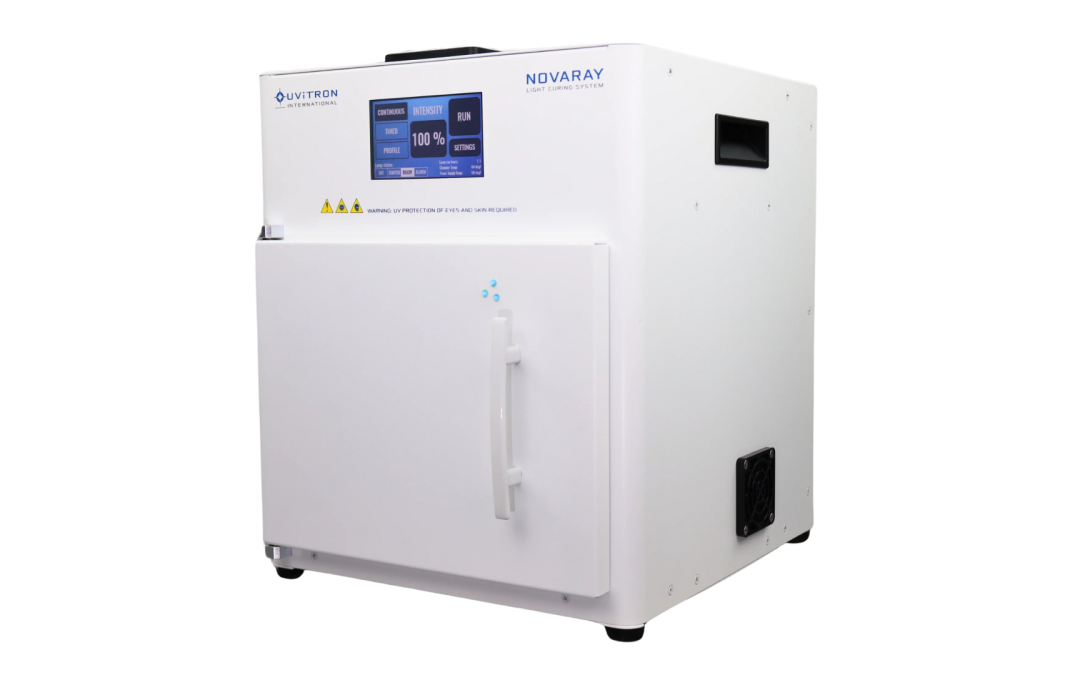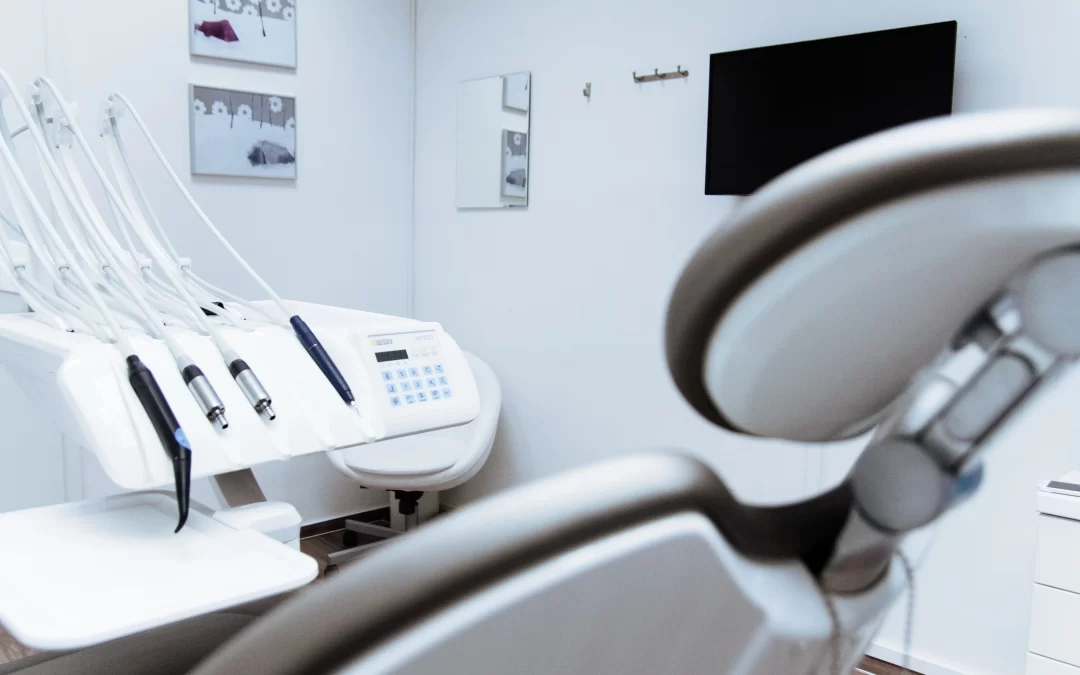
Jun 11, 2025 | Blog
In manufacturing, consistency isn’t optional. Whether you’re bonding, coating, or encapsulating, the curing process is where precision becomes performance. Yet too many engineers are still relying on outdated systems that offer little more than an on/off switch. That isn’t control. It’s a compromise.
The Problem with “Good Enough” Curing
Engineers are built to solve problems, not tolerate guesswork. Yet when a UV curing system delivers uneven exposure, fluctuating intensity, or lacks real-time feedback, it leaves too much to chance. Was the part fully cured? Was the exposure consistent? Has the output degraded?
Without data, there’s no way to be sure. And in industries like medical device manufacturing, aerospace, or electronics, uncertainty is a risk no one can afford.
That’s why more engineers are turning to systems like the NovaRay UV flood curing solution. Designed to deliver both power and precision, it provides the control and visibility modern applications demand.
Visibility, Repeatability, Accountability
In high-performance manufacturing, a reliable UV light source is just the beginning. Engineers need insight into what’s actually happening during every cure. They need visibility into output, repeatability across batches, and accountability built into the process.
That means real-time monitoring. That means tracking UV intensity, exposure duration, and system performance over time. It means having a digital record of every cycle for traceability and compliance. In today’s world of Six Sigma standards and ISO-certified operations, this level of control isn’t a luxury. It’s the baseline.
That’s exactly why systems like the NovaRay UV flood curing system are becoming the new standard. With integrated monitoring, touchscreen controls, and programmable settings, NovaRay gives engineers the tools to ensure every part is cured to spec, every time.
Raising the Standard
The expectations for UV curing systems have changed. It’s no longer enough for a system to simply work. Engineers need tools that work intelligently, adapt to evolving production demands, and provide actionable insights.
The next generation of curing systems isn’t just more powerful, it’s smarter. We’re seeing a shift toward full integration, with systems that include built-in monitoring, programmable settings, and automated feedback. These features are not optional. They’re essential for reducing material waste, identifying issues before they become defects, and ensuring consistent results from one cycle to the next.
In complex, high-stakes environments, guesswork is expensive. Whether you’re scaling up production or maintaining tight tolerances in a regulated industry, control and precision are the only way forward.
That’s where the NovaRay UV flood curing system fits in. With advanced features like digital timing control, real-time intensity feedback, and a fully integrated touchscreen interface, it puts engineers in full command of the curing process. It doesn’t just raise the standard, it sets it.
What That Looks Like in Practice
So what does real control actually look like in a UV curing system?
It starts with a touchscreen interface that lets you adjust intensity, exposure time, and shutter position with complete precision. Every parameter is at your fingertips, giving you the power to tailor the curing process to each application without relying on outdated knobs or external timers.
It means having a system that actively monitors each cycle, verifies the UV dose delivered, and alerts you the moment something shifts out of spec. No more reactive troubleshooting. You know what’s happening the moment it happens.
It also means built-in repeatability. You can program profiles, save settings, and ensure that every part on the line receives the same exposure as the last—without deviation. That kind of consistency is only possible with intelligent integration.
This was the blueprint behind the NovaRay UV flood curing system. It wasn’t developed in isolation. It was built in direct response to years of feedback from engineers asking for more visibility, more accuracy, and more control.
The result is a system that doesn’t just emit UV light. It gives you full command over the process, so you can meet higher standards without compromise.

Mar 12, 2023 | Blog
If you have ever had a cavity filled or orthodontic braces put on, you might have experienced the wonders of
UV light curing in the dental industry. This technology is a game-changer in the field of dentistry, making it easier, faster, and more precise to cure dental materials such as resins, adhesives, and composites.
Dental Composites
Dental composites are a popular alternative to traditional silver amalgam fillings. Unlike amalgam fillings, which are made of a mixture of metals and can sometimes be visible when you smile, dental composites are made of tooth-colored materials, making them more aesthetically pleasing. When a dentist applies dental composite to a cavity or damaged tooth, they first remove the decay or damaged part of the tooth and then apply the composite resin in layers. Each layer is carefully shaped and hardened using the high-intensity UV light, which provides precise control over the curing process.
The use of UV light curing in dental composites provides several benefits. First, it is a quick and efficient way to cure the composite material. The light can be focused on the exact area that needs to be cured, ensuring that the material hardens evenly and accurately. This helps to reduce the amount of time that a patient needs to spend in the dentist’s chair. Second, UV light curing provides a strong bond between the composite material and the tooth. When the composite is exposed to the UV light, it initiates a chemical reaction that causes the material to harden and bond to the tooth’s surface. This bond provides a tight seal that prevents bacteria from entering the tooth and causing further decay. Finally, dental composites that are cured using UV light are highly durable and long-lasting. The materials used in dental composites are designed to mimic the natural strength and resilience of teeth, making them an excellent choice for restoring damaged teeth.
Orthodontic Brackets
Orthodontic treatment is used to correct misaligned teeth and jaws, and one of the most common tools used in this type of treatment is braces. Braces consist of brackets that are attached to the teeth using adhesive, and wires that are used to apply pressure to the teeth and move them into the correct position.
To ensure that the brackets remain securely attached to the teeth throughout the course of treatment, it is crucial to use a strong adhesive that creates a durable bond between the bracket and the tooth. This is where UV light curing comes in. After the orthodontist has applied the adhesive to the bracket and positioned it on the tooth, they use a UV light to initiate the polymerization process. This process causes the adhesive to harden and bond to the tooth’s surface, creating a strong and durable bond between the bracket and the tooth. UV light curing is a quick and efficient way to initiate the polymerization process, which means that the adhesive cures rapidly, reducing the time that the patient needs to spend in the dental chair. It also provides a more reliable bond than traditional adhesives, which may not cure completely or may not bond as strongly to the tooth’s surface.
A strong bond between the bracket and the tooth is essential for the success of orthodontic treatment. The bracket needs to stay securely attached to the tooth throughout the course of treatment to ensure that the right amount of pressure is applied to the tooth to move it into the correct position. A weak bond can lead to the bracket coming loose or falling off, which can delay treatment and cause discomfort for the patient.
Dental Prosthetics
UV light curing is also used in the fabrication of dental prosthetics such as dentures and crowns. Dental prosthetics such as dentures and crowns are used to replace missing or damaged teeth. They are typically made using a resin-based material that is molded to the shape of the patient’s mouth. Once the prosthetic is shaped and positioned correctly, it is cured using UV light.
The use of UV light curing in the fabrication of dental prosthetics provides several benefits. First, it ensures that the material hardens quickly and evenly, which is critical for achieving a perfect fit. This is particularly important for dental prosthetics, which need to fit snugly and comfortably in the patient’s mouth to function correctly. Second, UV light curing provides a strong and durable prosthetic that can withstand the wear and tear of daily use. The material used in dental prosthetics is designed to mimic the strength and resilience of natural teeth, and the use of UV light ensures that the material cures properly, providing a prosthetic that can last for many years. Finally, UV light curing is a precise and efficient way to fabricate dental prosthetics. It allows dentists to create custom-made prosthetics that fit the patient’s mouth perfectly, without the need for multiple adjustments or fittings.
Teeth Whitening
Teeth whitening is a cosmetic dental procedure that has become increasingly popular in recent years. It involves the use of a whitening agent, such as hydrogen peroxide or carbamide peroxide, to remove stains and discoloration from the teeth. Traditionally, teeth whitening agents were applied to the teeth and left to sit for a period of time. However, this process could be slow and inefficient, and patients often had to undergo multiple sessions to achieve the desired results. With the advent of UV light curing, teeth whitening has become a much more efficient and effective process.
UV light is used to accelerate the chemical reaction between the whitening agent and the tooth surface, resulting in a more rapid and thorough whitening process. The UV light activates the whitening agent, causing it to break down and release oxygen molecules, which then penetrate the tooth enamel and break down the molecules responsible for staining and discoloration. The use of UV light curing in teeth whitening provides several benefits. First, it is a safe and effective way to achieve whiter teeth. Unlike some other whitening methods, UV light curing does not damage the tooth enamel or cause sensitivity. Second, it is a fast and efficient process. Patients can typically achieve noticeable results after just one session, which makes it an ideal option for those with busy schedules or special events coming up. Finally, UV light curing ensures that the whitening agent is evenly distributed across the tooth surface, which results in a more uniform and natural-looking whitening effect.
UV light curing has become an indispensable tool in the dental industry, providing an efficient, fast, and accurate way to cure dental materials. Its versatility has made it a valuable asset in a variety of dental applications, from bonding and filling to prosthetics and teeth whitening. With ongoing research and development, it is likely that UV light curing will continue to play a vital role in the dental industry for years to come.
_______________________
This article is intended solely for educational purposes and is not a substitute for professional dental advice. It explores the benefits and applications of UV light curing technology in dentistry, including its use in dental composites, orthodontic brackets, dental prosthetics, and teeth whitening. While providing an overview of how UV light enhances the efficiency and outcomes of dental treatments, it’s important to consult with a qualified healthcare provider for personalized advice or treatment related to dental health. Uvitron International Inc., mentioned herein, does not engage in the dental industry nor endorse specific dental procedures or products. The company specializes in UV light curing systems for industrial purposes, and references to dental applications are based on general knowledge and research within the dentistry field.

